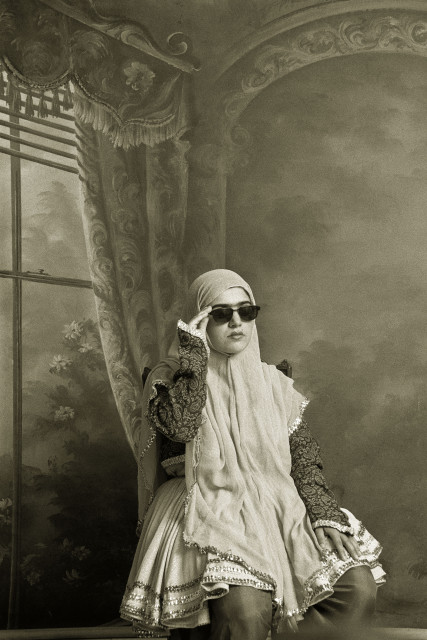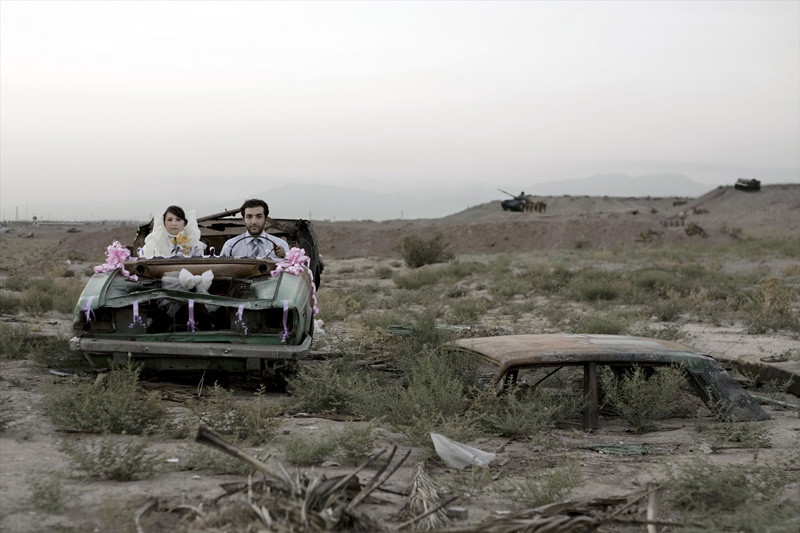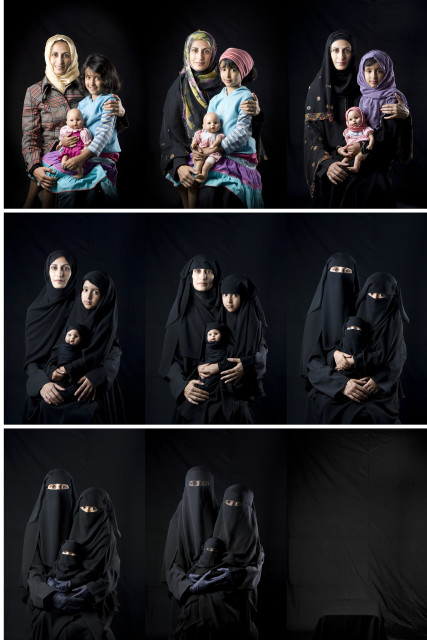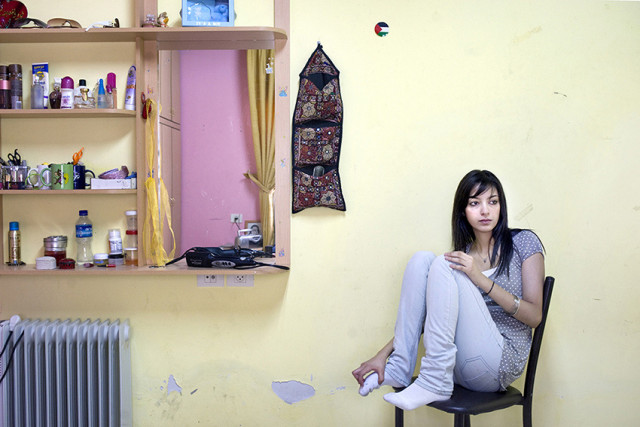Western news outlets have closely followed the story of Sajida al-Rishawi, an Iraqi woman with ties to ISIS who currently sits on death row in Jordan. What’s striking about the commentary to date is the surprise expressed that al-Rishawi—and like her, Hayat Boumeddiene, who was sought as an accomplice in the massacre of journalists at the office of French satirical newspaper Charlie Hebdo—could carry out such violent acts. That surprise is telling, for it illustrates the psychological constructions to which Middle Eastern women are often reduced: the hapless innocent with little ability to resist fundamentalism, or else the murderous zealot whose radicalization was inevitable.
Challenging those staid notions is an intimate exhibition now on view at the Cantor Arts Center at Stanford University. She Who Tells a Story: Women Photographers from Iran and the Arab World marshals the work of 12 contemporary artists to tell stories of lives that proudly and powerfully defy popular stereotypes.
Orientalism, a socio-political construct outlined by the late Palestinian cultural critic and theorist Edward Said, is the dominant schema by which Middle Eastern civilizations were situated for western audiences. Beginning in the mid-19th century, the advent of early photographic techniques allowed practitioners to build on the visual language already established by European artists including Jean-Léon Gérôme and Eugene Delacroix. On canvas and in photographs, Middle Eastern societies were presented as exotic, violent, inferior, and therefore beholden to their colonizing western counterparts for drawing them into the rapidly modernizing world.

It could be argued that all of the images featured in She Who Tells a Story were made as an interrogation or rejection of essentialist thinking, but there are specific bodies of work that illustrate how those challenges have changed over time. Lalla Essaydi—who along with Shirin Neshat, also represented in the exhibit, is arguably one of the better-known Arab artists in the contemporary art community—visualizes the female body as the prize of wholesale cultural consumption. Bullets Revisited #3 (2012) features a woman reclining on a low-slung bed in front of a gilded background. Looking closer, one realizes that the shimmering facets are not gold, but bullet casings. She is languid, available at least to our gaze, yet uninviting. She is contained, as women were thought to be controlled within physical spaces such as harems.
Essaydi’s performative practice addresses space as a gendered experience, identity, and isolation, all of which parallels her experience of growing up between eastern and western sensibilities. In this image, as in her earlier series Converging Territories (2003-04), calligraphy references the power of the word in Islamic culture. Her subject’s skin bears the mark of religion, while other material signifiers such as bullet casings reference the fearsome rise and bloody consequences of extremist factions such as ISIS and Al-Qaeda.




